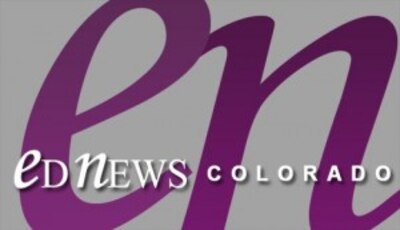Updated 1:30 p.m. – The state’s revenue and spending problem is even worse than previously projected, according to the second installment of a study by the Center for Colorado’s Economic Future at the University of Denver.
“Twelve years from now, Colorado will generate only enough sales, income and other general-purpose tax revenue to pay for the three largest programs in the General Fund – public schools, health care and prisons. There will be no tax revenue for public colleges and universities, no money for the state court system, nothing for child-protection services, nothing for youth corrections, nothing for state crime labs and nothing for other core services of state government,” according to a summary of the report.
Discussing school finance, the report paints a scenario designed to protect to some extent other state departments. “Under this scenario, public schools would be cut at least 19 percent in 13 of 14 years from now until FY 2024-25, and they would be cut the maximum amount in 10 of those 14 years,” the report says.
The 2010 legislature commissioned the center to do the privately funded study. The first installment was unveiled last February (see story). The latest segment was released today.
Projected spending from the state general fund, much of it driven by formulas and requirements, will exceed revenue by $3.5 billion in fiscal year 2024-25, the report estimates. (Current general fund spending runs about $7 billion a year, roughly half consumed by K-12 and higher education.)
“The enormity of this gap suggests that Coloradans consider both tax increases and spending cuts, the Center finds. Attempting to dig out of this hole solely through cuts is problematic,” the statement said.
Among options suggested by the center are a new school finance system, establishment of a graduated income tax to replace the current flat rate and extension of the state sales tax to cover more services.
The report notes that a key way to control state education costs would be to stabilize or increase the local share of education spending, which has been falling steadily for years and now stands at about 35 percent of K-12 costs.
“The structural aspects causing the local share to erode can be addressed by moving toward a more uniform statewide mill levy for schools,” the report found.
That could be done by imposing a uniform mill levy throughout the state, a uniform mill levy coupled with a statewide property tax or by replacing local property taxes with a statewide tax.
A statewide property tax would require voter approval to changes in the Taxpayer’s Bill of Rights, and any of the options would impose higher taxes on many property owners.
The report comes out just as the Lobato v. State lawsuit trial is winding down. Plaintiffs in that case argue that the school finance system violates the state constitution and ask the court to order the legislature to come up with a new one.
Just starting is the campaign to pass Proposition 103, a ballot measure that would increase state tax rates for five years to provide “stopgap” funding for schools and colleges. Sen. Rollie Heath, D-Boulder and the author of 103, also was a prime mover in commissioning the tax study.
Get more details on the report here, and test out the center’s interactive budget simulator here.

What’s churning
The order of the ballot is set for the Denver Public Schools board election, following a random drawing Tuesday of candidates’ names by elections officials.
Alton Dillard, spokesman for the Denver Elections Division, announced that nine candidates have qualified for the Nov. 1 mail ballot. Three of seven DPS board seats are up for election.
Ballot order is determined by random drawing because school board races are non-partisan elections.
The order on the ballot for the at-large or citywide race is as follows:
- Happy Haynes
- Roger Kilgore
- John Daniel
- Jacqui Shumway
- Frank Deserino
In each of the other two seats being contested, there are only two candidates.
In District 1 or southeast Denver, where current board member Bruce Hoyt is term-limited, the first name on the ballot will be Emily Sirota and the second will be Anne Rowe.
And in District 5 or northwest Denver, Jennifer Draper Carson’s name will appear atop that of Arturo Jimenez, who is campaigning for a second four-year term.
Denver must certify its ballot to the Secretary of State by the close of business Friday – but, since Friday is a furlough day for city employees, that will likely be done one day sooner.
Mail ballots will go out to voters in the second week of October.
Ballot orders for candidates in other large metro area districts, including Jefferson and Douglas counties, are not yet set. See a listing of school board candidates in the state’s three largest districts here.
What’s on tap:
TODAY
The University of Denver’s Center for Colorado’s Economic Future will present the second installment of its study of Colorado’s state and local tax systems, including recommendations. The session will be at 10:30 a.m. in the Hotel, Restaurant and Tourism Management building on the DU campus. See this EdNews story for details on the report’s first installment, issued last February.
Denver Public Schools is hosting a coffee for parents of special education students from 9:30 a.m. until 11 a.m. at 1330 Fox Street in Denver. More info.
Good reads from elsewhere
On the move – John Covington, the former superintendent of Pueblo City Schools who publicly called for an investigation of the Cesar Chavez charter schools network there, is on the move again, from Kansas City to Michigan, according to this report from the New York Times.
